
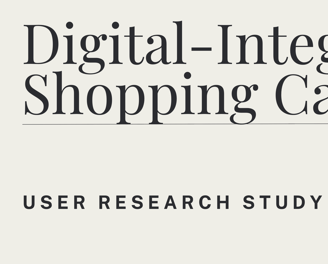
Project overview
Objective
To gain valuable insights on features that would improve grocery shopping experience at Safeway.
To conduct research on features that grocery shoppers would like to improve their shopping experience at Safeway.
Expected outcome
Demographic
Gen Z and millennial shoppers


Rationale and background
Industry trend
To explore the possibility of AI in enhancing in-store grocery shopping experience.
Fast-growing retail businesses
Consumers are tech savvy among gen Z and millennials
Competitions like Amazon Go
AI integration for online shopping
Goal
Research questions
Key questions that we want to answer:
What are the shopping patterns that inform Safeway about shopping behavior?
How efficiency is the current in-store shopping experience with the current Safeway/other grocery shopping app?
What are the current technological tools and features that shoppers have used/preferred to aid their shopping experience?
What are the influence factors (budgets, deals, price, etc.)?
Research methodology
Primary research
Conduct one-on-one interviews
Ethnography fieldwork
Design probes
Secondary research
Conduct ten literature reviews
Participant recruiting strategy
Characteristics of ideal study participants
Gen Z and millennial
Regular Safeway shoppers
Tech-savvy individuals
Diversity
Age: Born between 1997 and 2012 (Gen Z) or 1981 and 1996 (Millennials)
Digital-ccentric behaviors and prefrences
Familiarity with Safeway stores and current shopping experience
Comfortable with technology, including smartphones and digital tools
Gender, ethnicity, socioeconomic status, disability status, and geographical diversity
Who
Where
How
The team aims to recruit Gen Z and millennial shoppers who regularly visit Safeway stores. Their familiarity with Safeway and their digital habits make them ideal participants to provide insights into the effectiveness of the digital-integrated shopping cart.
The recruitment will focus on Safeway stores located in areas with a high concentration of Gen Z and millennial populations. This includes urban areas, college towns, and neighborhoods known to attract younger demographics.
The team will utilize a mixed-method approach to recruit participants, including both offline and online methods:
In-store Recruitment: Setting up recruitment stations at Safeway stores, where potential participants can be approached and invited to participate in the research project.
Online Channels: Utilizing social media platforms, online forums, and Safeway’s website to reach out to potential participants, provide project information, and invite them to participate.
Compensation Strategy
No monetary compensation will be provided to participants. The rationale behind this decision is to avoid any potential biases that compensation may introduce and to ensure that participants are genuinely interested in contributing their insights and experiences.
Instead, the team will emphasize the value and importance of the research project, highlighting how participants’ feedback can directly impact the future shopping experience at Safeway stores.
Recruitment Timeline
Participant recruitment will begin approximately one month prior to the implementation of the digital-integrated shopping cart at Safeway stores.
The recruitment phase will last for two weeks to allow sufficient time for participant enrollment, screening, and scheduling. The research team will then have ample time to prepare and implement the research project according to the defined timeline and project plan.
Recruitment Timeline
To be eligible for the study, participants should meet the following criteria:
Age: Fall within the Gen Z or millennial age range (born between 1981 and 2012).
Safeway Shoppers: Regularly shop at Safeway stores and have a reasonable level of familiarity with the current shopping experience.
Tech-Savviness: Possess a good understanding of technology, including smartphone usage and familiarity with digital tools.
Diversity: Participants from diverse backgrounds in terms of gender, ethnicity, socioeconomic status, disability status and geographical location to ensure a comprehensive representation of the target demographics.
Participants recruitment poster
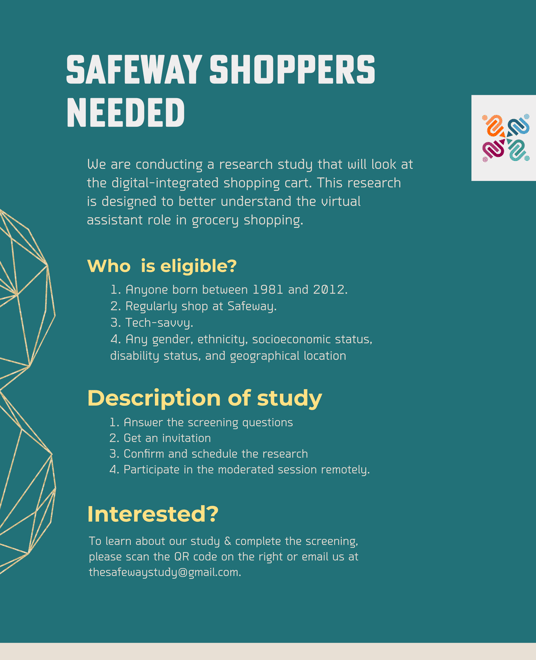

Are you between the ages of 18 and 42?
Do you shop at Safeway stores regularly?
Are you comfortable using smartphones and digital tools for everyday tasks?
Are you active on social media platforms (Instagram, Twitter, or Facebook)?
Have you visited Safeway’s website before?
Are you available to participate in the research project during the specified timeline?
Would you be willing to meet in person for an interview with us to talk about your experience of shopping at the Safeway store?
The interview will take 45-60 minutes. Are you willing to spare that much time?
Advertisement
User research screen questions:
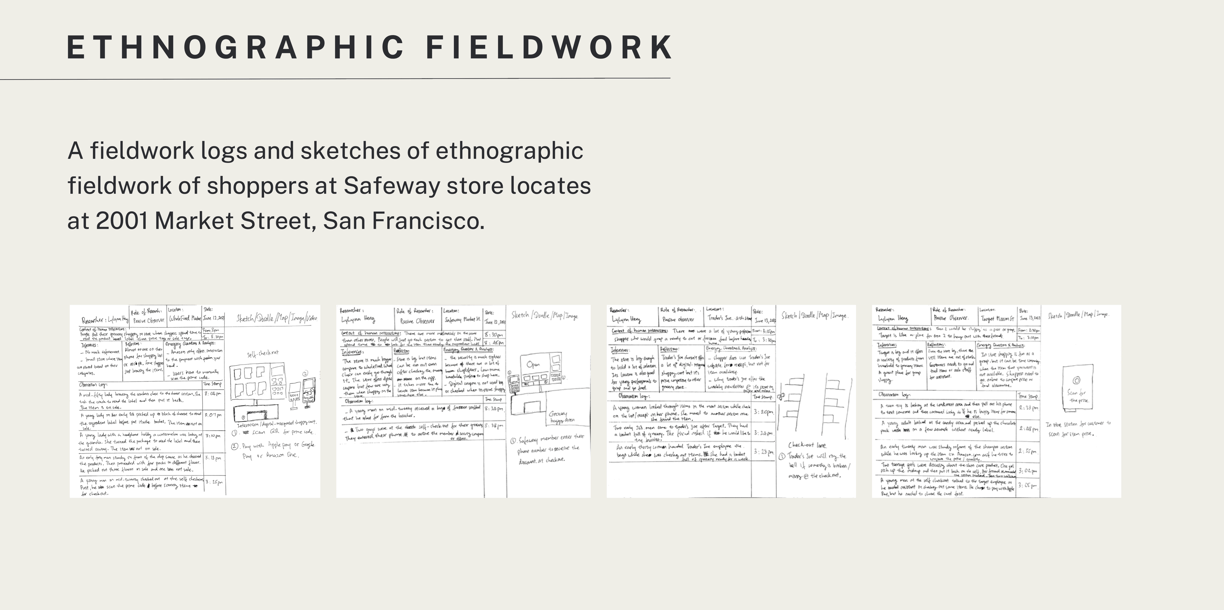

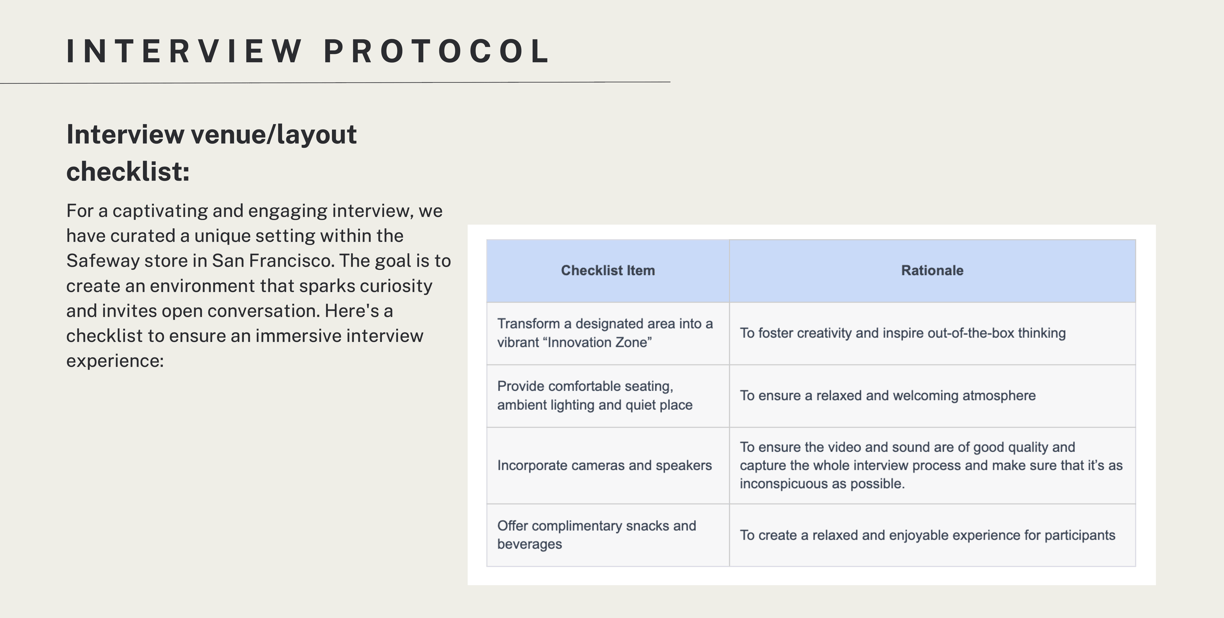

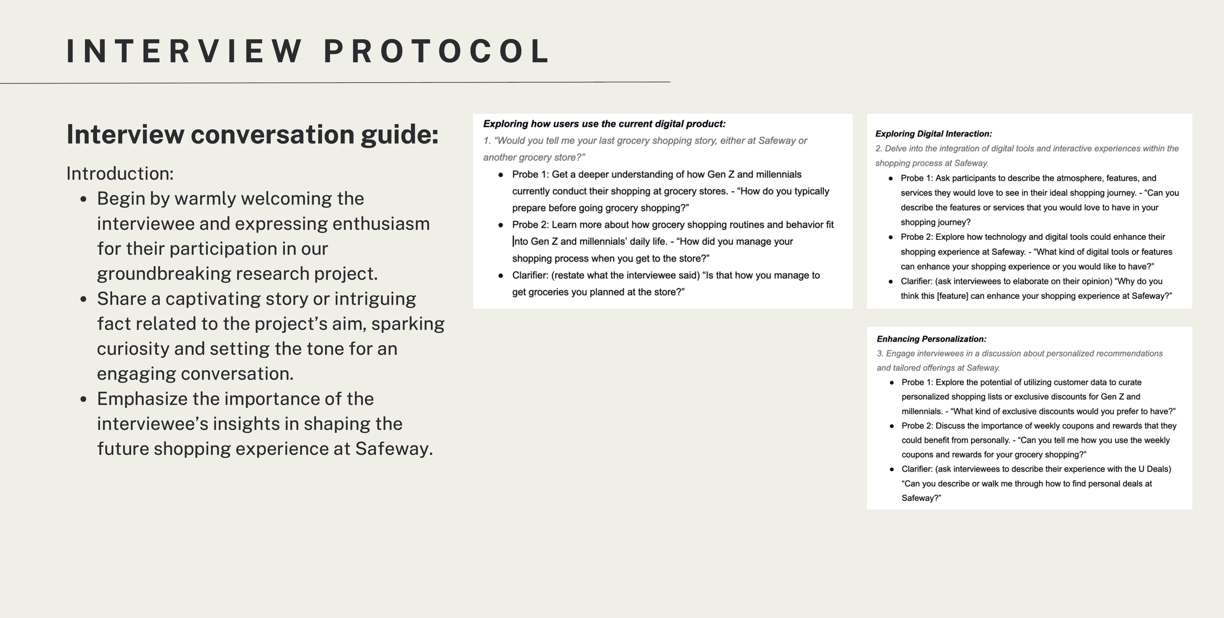


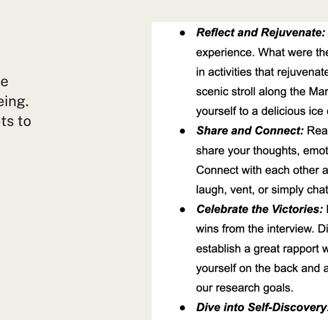
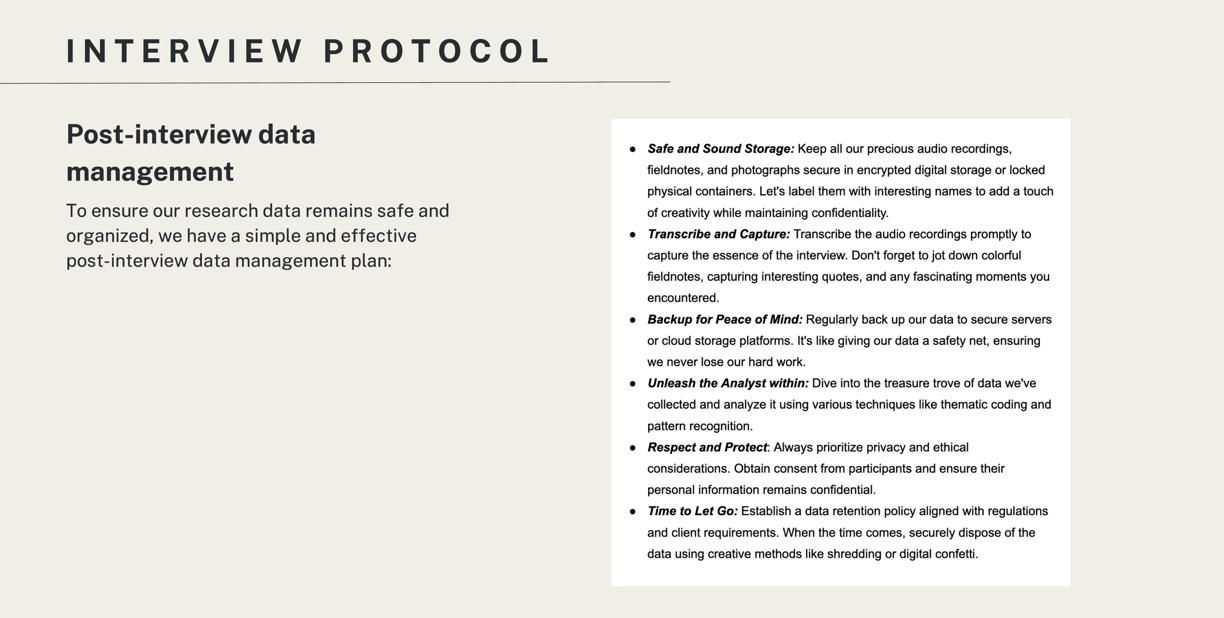

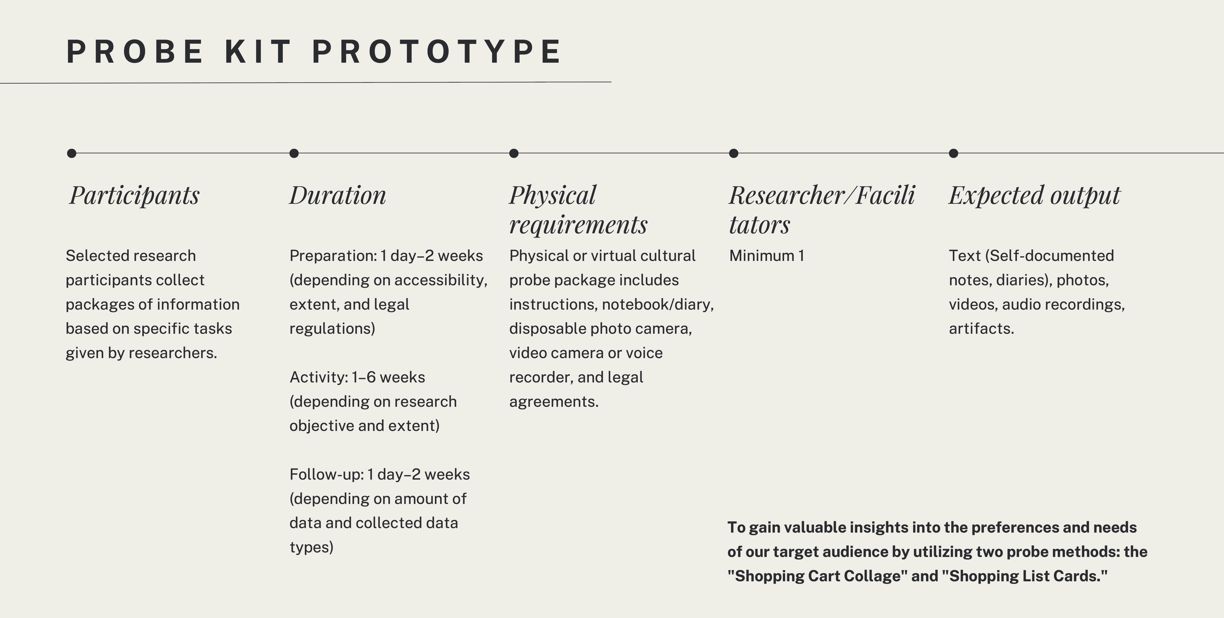

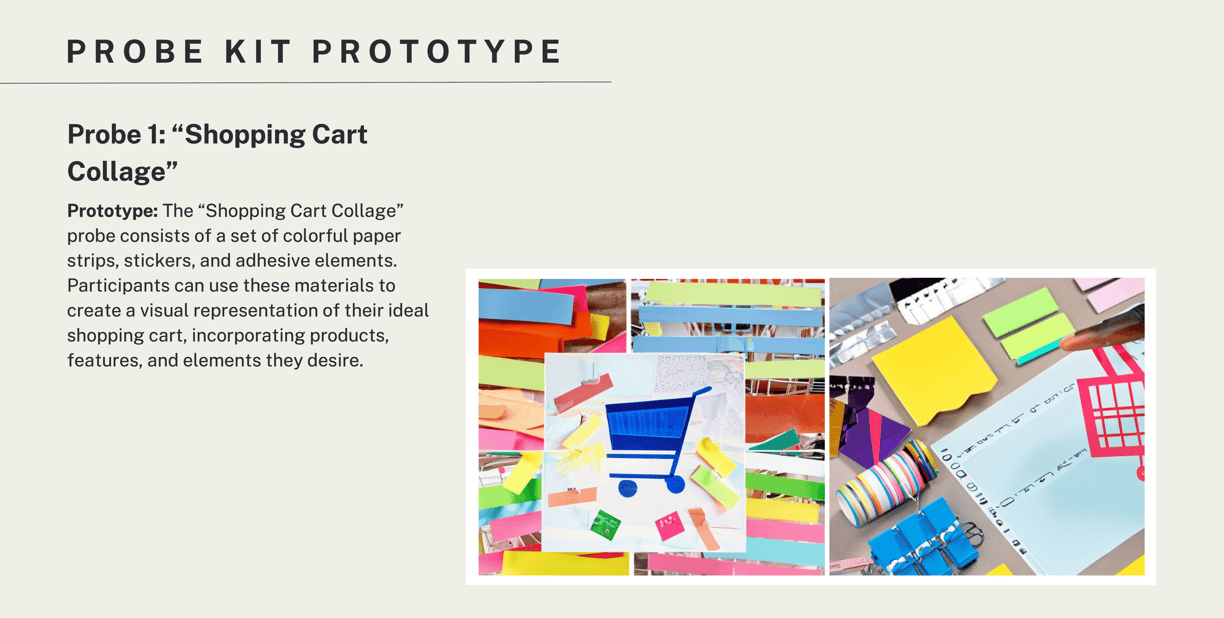

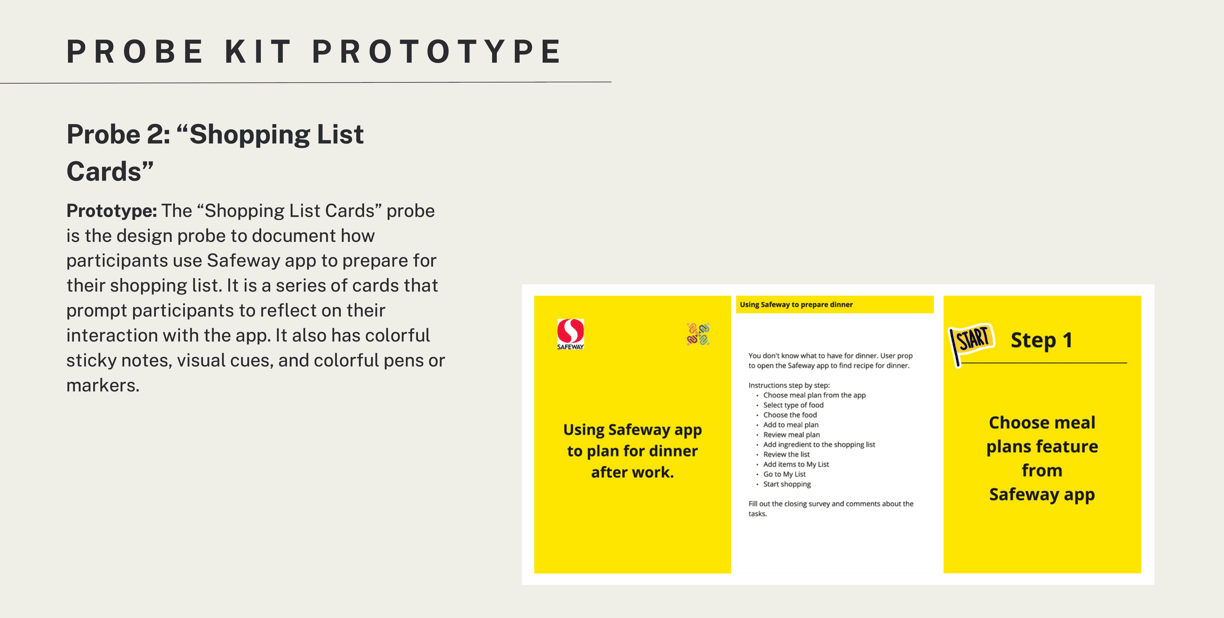

Secondary research
Literature reviews
The mandate of this research project is to design and implement a digital-integrated shopping cart for Safeway. This research project aims to integrate a virtual assistant or chatbot functionality into the Safeway shopping cart. The project's main focus groups are Gen Z and millennial shoppers who love digital devices. The expected outcome is to gain valuable insights into the effectiveness of integrating virtual assistant or chatbot functionality in Safeway’s shopping cart and whether it is in line with the digital lifestyle of Gen Z and Millennials.
Research questions
What is the current shopping cart technology in the market?
What are the features? How does it help the shoppers, especially those with disabilities?
How does the shopping cart technology work with the shopping list?
How do supermarkets use AI as a shopping tool?
Overall research strategy
The search strategy consists of the sources in scholarly and scientific databases such as Gale Academic OneFile, EBSCO, etc. The research will focus on keywords, concepts, theories, and contextual technology related to the shopping cart experience and virtual assistant.
Research keywords
Shopping cart technology, virtual/smart assistant shopping, AI shopping cart, grocery shopping cart technology, Chatbot Shopping Cart and shopping list.
Data analysis
Data analysis tool
Transpose all data from another team member’s interview transcripts into a Google Sheets to prepare it for thematic coding.
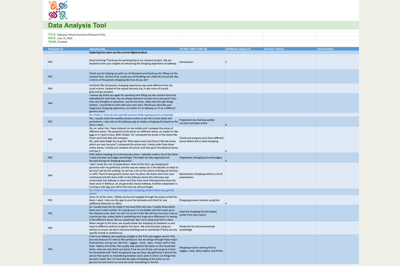

Triangulation & Thematic Analysis – Combined Dataset
Take qualitative data and code them to create themes. Themes are for evidence-based design recommendations.
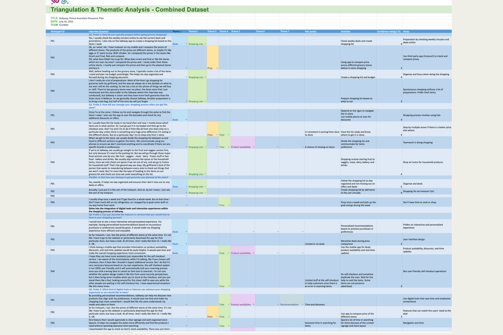

Findings
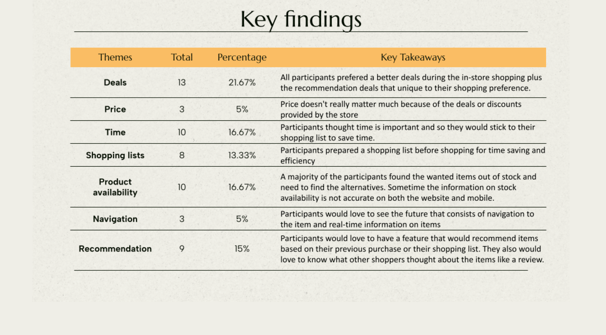

Key findings are in the following features for the future work.
Deals
Product availability
Recommendations
Shopping lists
Summary
Research synthesis
Human perspective on needs
The stakeholder: A 28-year-old male living in a city and shopping at Safeway regularly.
Deals – personalized deals.
Product availability – save time and energy.
Recommendation – alternative items or based on their shopping preferences.
Shopping lists – create a list to maximize their time and efficiency.
Price – price comparison.
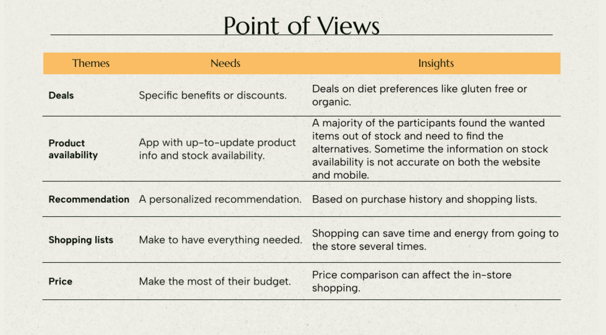

HMWs based on the findings
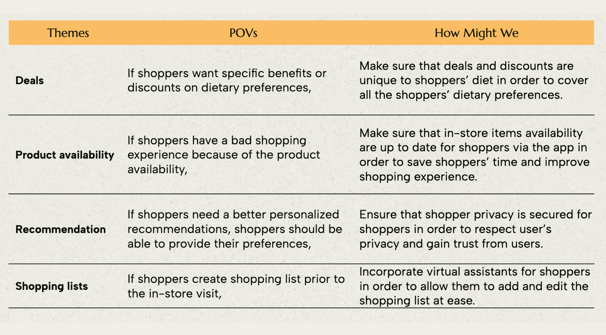

Design recommendations
Unique dietary deals
Ensure personalized deals
Enhance user experience
Offer product recommendations based on preference
Competitive price for users
Real-time inventory updates
Save time
Enhance decision making
Privacy-secured personalization
Gain trust from the user
Better recommendations
Respect user’s privacy
Option to share data or opt-out
Shopping lists virtual assistant
Enhance user experience from searching, creating, and shopping for items.
Save time
In-store navigation
Alternative assistant
